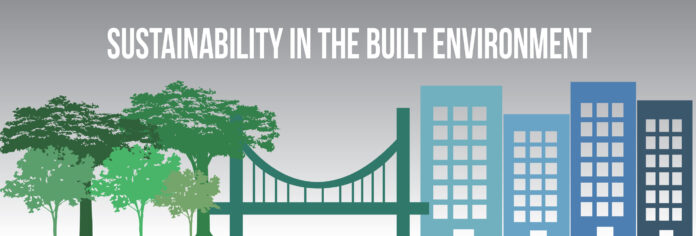 Currently, it seems like every business model is to go green. The motivation for businesses to go green is simple — money. Businesses will invest in alternative energies only if they will see a return on their initial investment within a reasonable time frame. From this notion derives the increasingly popular business term “green is green,” which, in layman’s terms, states that green (green engineering) will yield businesses more green (money). This opens up a can of worms between the businesses and environmentalists.
Currently, it seems like every business model is to go green. The motivation for businesses to go green is simple — money. Businesses will invest in alternative energies only if they will see a return on their initial investment within a reasonable time frame. From this notion derives the increasingly popular business term “green is green,” which, in layman’s terms, states that green (green engineering) will yield businesses more green (money). This opens up a can of worms between the businesses and environmentalists.
Obviously, businesses will choose the alternative energy source that will return the most capital in the shortest amount of time (most of the time that energy source is non-renewable). Businesses only have two variables — monetary return and time. Environmentalists, in contrast, will choose the alternative energy source that reduces fossil fuel dependency by the highest percentage while subsequently reducing ecological impact. The environmentalists have many variables to consider, but the main choices are based on non-renewable energy reduction and environmental health.
So, where on the spectrum does the ideal alternative energy source lie? The general answer is that there is no answer. There does not exist a one-size-fits-all energy source for all locations and energy related necessities on the planet.
In order to understand the reasons behind the implementation of alternative energy sources, a brief (however incomplete) history lesson is beneficial. Eco-friendly energy sources can be dated all the way back to 200 B.C., when Europeans used energy from flowing water to harness energy to power mills. Following the European use of river energy was the 10th century Persian operation of windmills used for irrigation and corn grinding. Skip approximately 700 years to England, where electrolysis (the groundwork research for hydrogen fuel cells) was being exploited for metal production.
Moving along — France, 1860, is probably one of the most recognized stepping stones for alternative energy. The French developed a model that uses carefully aligned mirrors to harness solar energy. This system was designed to heat up water to produce steam, thus powering various equipment. The last source of energy in this string of places is California in 1921. This time and place marked the first use of geothermal power plants to produce energy. This timeline just presented is to help one understand the long and arduous journey alternative energy has been through — and will continue to go through.
Via the rough timeline of alternative energies, one can see that each alternative energy system was used for a specific reason. This gets to the heart of the initial question — which alternative energies are more suitable? The implemented energy source was dependent on the necessities of the system in need. That is, no one such alternative energy source is better than another.
Imagine Earth 1,000 years into the future — if humans managed to not destroy the planet — the assumption that all energy sources would be sustainable is reasonable. Now think about what sources might be in place, would the world be littered in solar panels? No, because there are massive areas on the planets that get limited sun. Would the entire planet be powered by wind or tidal currents? No, because there are places on the planet in which these energy sources are poor or non-existent.
Under the assumption that all energy sources are going to be renewable come year 3015, I would claim that the largest percent of energy production would be from geothermal energy (the unnecessarily slow implementation of this science will be discussed next week). In short, geothermal energy is the energy produced by manipulating heat within the Earth. Geothermal energy can produce massive amounts of energy, anywhere on the planet. This science is still currently being researched but initial implementation costs are drastically decreasing. Geothermal energy is the most environmentally friendly and economically sound renewable energy source to date. However, as stated before, all renewable energy sources are beneficial for specific situations; it’s just that geothermal energy is specific to the largest range of global energy needs.
BRENT LUND can be contacted at brlund@ucdavis.edu
Graphic by CA Aggie Graphic Design Team
Photo by CA Aggie Photo Team



